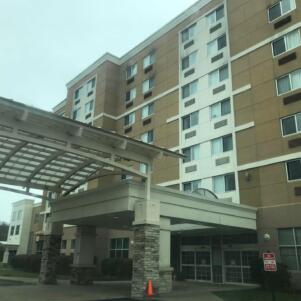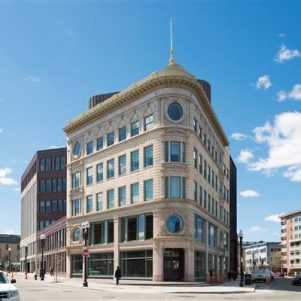Presidents of successful small religious colleges share insights
By Mary McCleary | May 31, 2016, 6:40 EDT
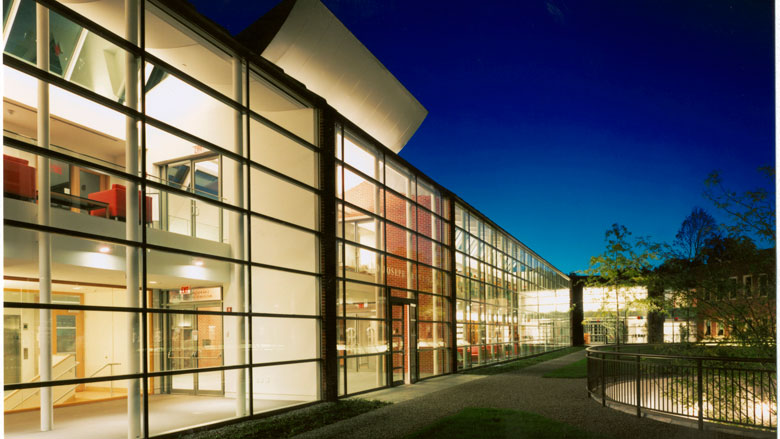 Hebrew College (Credit: Peter Vandarwarker)
Hebrew College (Credit: Peter Vandarwarker) This is the first in a two-part series on the insights and challenges facing smaller religious colleges.
As in the rest of the country, small religious colleges in the Boston area are facing difficult times. Sharp declines in enrollment and revenue are forcing many to close. Recently, for example, Andover Newton Theological Seminary — the nation’s oldest theological school — announced it would shutter its campus and merge with Yale Divinity School. Marian Court College, a Catholic school in Swampscott, Mass., also closed last year. But three small colleges have bucked the trend, and are flourishing in the nation’s most competitive higher education market.
How? The key is a flexible and proactive response to changing demographics, while maintaining a strong religious identity.
Presidents Rabbi Daniel L. Lehmann of Hebrew College, D. Michael Lindsay of Gordon College, and Rev. Brian J. Shanley, O.P. of Providence College, oversee three challenging, yet highly successful operations. Although their institutions represent different religious traditions — Jewish, non-denominational Christian, and Catholic, respectively — their resilient and foresightful strategies are quite similar.
In this two-part series, we’ll explore how each of these colleges has evolved and responded to the changing needs of higher education. There are four critical areas that they have addressed effectively. Part One focuses on how they were able to adapt their original organizational structure to improve enrollment. We’ll then see how the robust growth in their student body was a direct result of diversifying their student body, faculty, and curriculum, while retaining their core ethos. Part Two will discuss how each president stabilized and increased his schools’ financial resources, while remaining vigilant to improve them further. Finally, we’ll study how the colleges maintain their religious identity, and actively promote its place on campus.
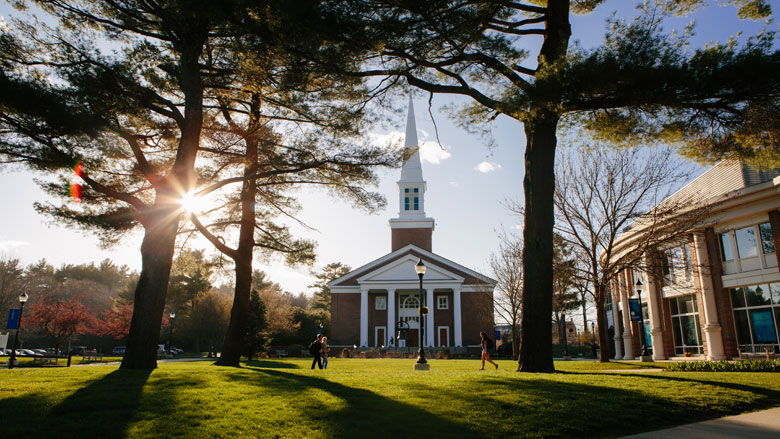
Gordon College (Credit: Gordon College)
Most of us are familiar with the maxim “the tree that doesn’t bend, breaks.” Colleges, like businesses, need to adapt to changing times and circumstances. Sometimes, however, institutions bend so much that they become uprooted, with devastating results. The more perceptive schools know how to modify their structure without losing their raison d’être.
In recent years, Hebrew College made this type of productive transition. Located in Newton Centre, Mass., the school has 208 graduate students, 237 non-degree students, and over 900 adult learning students. They also have 200-250 teenagers who participate in a number of activities.
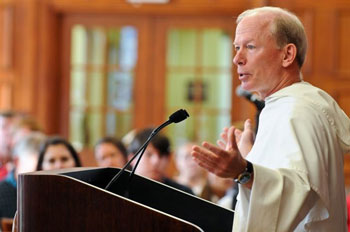
Rev. Brian J. Shanley, O.P., President of Providence College (Credit: Providence College)
When it was founded in 1921, it was called Hebrew Teacher’s College. It was part of the Hebraist movement in the early 20th century that promoted Hebrew culture among the influx of Eastern European immigrants.
“The previous emphasis of the college was on the Hebrew language, culture and history,” said Rabbi Daniel Lehmann, president of the school since 2008. “The school was not particularly religious since it focused on Jewish ethnic heritage. As time elapsed, however, the needs changed.”
Early in its history, Hebrew College offered bachelors degrees. Most of the students came from its Hebrew immersion program, which offered classes 5 days a week for high school students. These students could then continue on to the Bachelor’s degree program. They would simultaneously attend other colleges, such as Harvard, Tufts, Brandeis, and Simmons, for a B.A. there, and then attend Hebrew College in the evenings for its program. But once the other colleges started their own Jewish Studies degrees, there was no longer a need for a Bachelor’s program.
“We’ve always been oriented toward preparing and training educators and leaders from the Jewish community. Only now we focus on religious leadership at the graduate level.” — Rabbi Daniel Lehmann
So 12 years ago, Hebrew College added a rabbinical school. “We’ve always been oriented toward preparing and training educators and leaders from the Jewish community,” Lehmann observed. “Only now we focus on religious leadership at the graduate level.”
Hebrew College is the only institution of Jewish higher education in which the rabbinical school came after its founding. Its program is in high demand because it is uniquely positioned to form a specific kind of religious leader. The college boasts the first pluralistic, full-time rabbinical school in the country, which is an advantage since it is not linked to any particular Jewish denomination. As a result, Hebrew College is one of the few rabbinical schools that has experienced growth in the last decade.
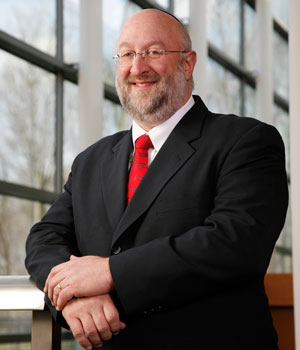
Rabbi Daniel Lehmann, President of Hebrew College (Credit: Hebrew College)
Gordon College in Wenham, Mass., also went through a major transformation. When it was founded in 1889, it was exclusively a missionary school. Called Boston Missionary Training School, the college was originally located in Boston and Newton. Within 30 years as enrollment increased, it outgrew those facilities, and moved to Fenway before finally settling in Wenham.
But with time, the number of students languished. When Michael Lindsay, the current president, took the helm in 2011, new student enrollment had steadily declined for several years. “Added to that,” Lindsay said, “the finances were shaky, and fundraising was moribund. Since then, however, we’ve made a 27 percent increase in enrollment in the last 5 years.” The college now has approximately 1,700 undergraduate and 350 graduate students.
The dramatic turnaround is directly attributable to the rigorous steps Lindsay initiated. “We had to fight hard for each student. And we have to remain vigilant. Boston is the most competitive college market in the world, and now the world wants to come to Boston to study.”
At the same time, Gordon College has had to reshape its enrollment constituency. Previously, most students at the college came from New England. But the number of high school students in Boston and the surrounding area has been in steady decline. Now, to grow their numbers, Gordon actively recruits from around the country, and around the world.
Lindsay is keenly interested in the global results. He frequently travels abroad to promote the college. He has also developed partnerships with international high schools, where families appreciate the college’s rigorous curriculum and quality education. As a result, there has been a 140 percent growth rate in international students in the last 5 years alone.
“We had to fight hard for each student. And we have to remain vigilant. Boston is the most competitive college market in the world, and now the world wants to come to Boston to study.” — Michael Lindsay
Rev. Brian J. Shanley, president of Providence College since 2005, also understood the need to reshape his student body demographics. Like Hebrew College and Gordon College, Providence College had to modify its original target market to accommodate emerging conditions.
Located in Providence, R.I., the school was founded in 1917. Shanley discussed how it has changed in the past 100 years. “One way in which we have evolved is our geographic reach. When PC was founded, it was with the intention that the College would be a place where the Catholic youth of Rhode Island could earn a college degree,” he noted. “As such, PC’s student body was comprised largely of Rhode Islanders for quite a few years. As recently as the early 1970s, Rhode Islanders still made up about 50 percent of the undergraduate population.”
With time, however, Providence College had to broaden its reach to increase enrollment. “Now, while we are still a desirable destination for local students, the very large majority of our undergraduate population — roughly 90 percent — comes from other states.”
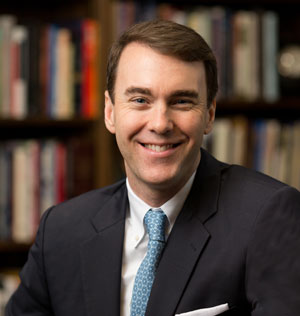
Michael Lindsay, President of Gordon College (Credit: Gordon College)
Like Gordon College, Providence College cast its nets abroad for new students. “The number of foreign students studying here has also increased significantly over the last decade,” Shanley said. “This is all by design, as the College’s strategic vision is to make PC a nationally recognized, premier Catholic liberal arts institution.” As a result, the school has grown to just under 4,000 full-time students and over 700 graduate students.
Providence College also adapted its curriculum to offer specialized instruction about Western Civilization, and later included the influence other cultures. “Another significant evolution is the manner in which our curriculum has changed over the years,” Shanley said. “While Providence College has always been a liberal arts institution, the manner in which we ask our students to study the liberal arts has changed over time. Beginning in the early 1970s, we instituted a program called ‘The Development of Western Civilization,’ which quickly became the centerpiece of our curriculum.”
This course requirement is viewed through a variety of academic lenses. “The class is team-taught by members of the college’s history, English, philosophy and theology departments,” Shanley remarked. “It covers Ancient Greece up to modern times, engaging students in discussions about the history, literature, art, religion, and philosophical issues of each time period in the history of western civilization. Over the last decade, the college has also sought to include discussion about the influence of non-western cultures in the program.”
The move to incorporate studies of non-western cultures reflects the growing diversity on campuses. Gordon College, for instance, has experienced a 70 percent growth rate in domestic students of color in the past five years. When that figure is combined with the 140 percent growth rate in international students, the result is a remarkable transformation in the composition of the student body. Gordon now hosts students from China, Brazil, Korea, Canada, and many countries in Africa and Europe.
In addition to their national ranking, Lindsay notes that their efforts to diversify the student base have enhanced their appeal among prospective students abroad.
“While we are still a desirable destination for local students, the very large majority of our undergraduate population … comes from other states.” — Rev. Brian J. Shanley
“Gordon is nationally ranked, which is an advantage with international recruiting. Families appreciate our Christian identity and campus atmosphere. But since they also want a solid education for their children, they respect that we are ranked #143 among national liberal arts colleges,” Lindsay said. “Furthermore, we are one of only two Christian colleges listed in both Princeton Review and Kiplinger’s list of Best College Values.”
Shanley similarly noted the important role of diversity among both students and faculty at Providence College. “Diversity is a significant issue for the college, as it is at many other institutions across the country. We have made major progress during my tenure as president, with the number of multicultural undergraduate students more than doubling from 8 percent in fall 2005 to 17 percent in fall 2015. Multicultural faculty also increased from 8 percent in fall 2005 to 14 percent in fall 2015,” he said. “Diversity is one of the five core values of our current Strategic Plan, and we have a more specific Strategic Plan for Diversity, much of which is well into implementation.”
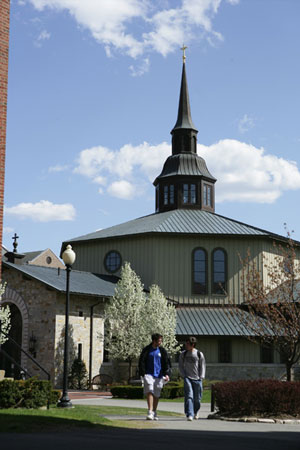
Providence College (Credit: Providence College)
Shanley emphasized that his efforts are an ongoing process. “Diversity is more than just statistics,” he noted. “A true, diverse campus is also truly inclusive, one where every student, faculty member and staff employee feels welcome, respected and included as part of the campus community. I can say with honesty that we are not there yet, but we are working very diligently to arrive at that place.”
At Hebrew College, Lehmann has tried to foster better understanding among diverse religious traditions. “America is becoming more pluralistic and sensitive to diversity,” he observed. As a result, Lehmann took the initiative to collaborate with both Boston College and the Boston Theological Institute, of which he is now chair of the board. He also noted that Hebrew College, together with Andover Newton Theological School, hired an Islamic scholar to work at both institutions.
Lehmann added that one of the principal reasons Hebrew College has been so successful is that it recognized a significant change within Judaism in the U.S. “Borders are becoming permeable,” he said. “What’s happening in American Judaism is a shift away from the denominational structure. That structure was a largely 20th century phenomenon, whose origins were in 19th century Germany. Now, we’re living in an era in which people are less interested in ideological distinctions.”
The younger generation is disinclined to adhere to strict delineations within Judaism. “Now we have faculty from all Jewish traditions,” Lehmann added. “This is because they are more aligned with Millennials, who do not want to be constrained by denomination and ideologies.” But he also noted that most students are very active in religious life, and regularly attend services.
Like Gordon College and Providence College, Hebrew College is enjoying unprecedented growth because of this willingness to adapt its original structure to modern student exigencies, while maintaining a strong commitment to religious life.
NBPSchool




